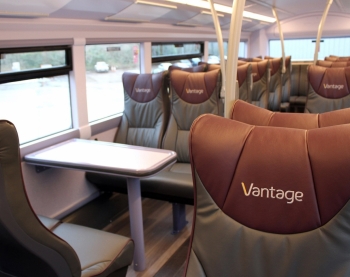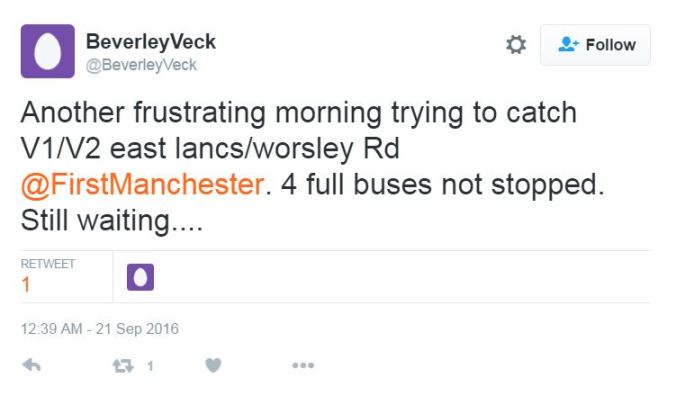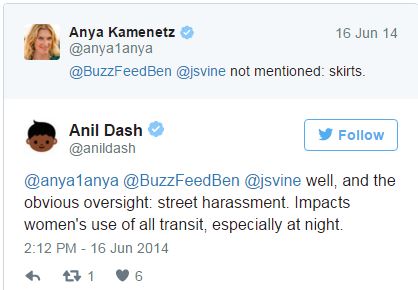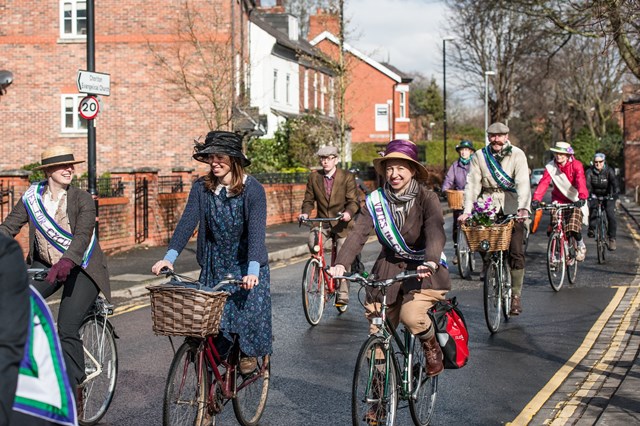
Today, Greater Manchester joins around a dozen areas in the UK, to be home to guided buses. These specially adapted double deckers travel on regular streets, as well as specially designed concrete tracks.
TfGM say that journeys will be made more reliable, but local opposition to this scheme has been fierce. Writing from the maiden voyage of the rather swish looking First Vantage bus, Urbanitymcr gives our verdict, asking:
Will the critics finally be silenced?
Countless pieces on the delays and cost to businesses have featured in the Leigh Journal, and Manchester Evening News continuously. If the comments sections of these newspapers’ sites have anything to go by, opposition has been fierce, with support for the scheme harder to come by. Much criticism has come from Motorists on the disrupted A580. Anyone who has spent longer than an Smooth Radio ad break in stop-start traffic will know that it’s enough to turn a civilised commuter into a keyboard warrior.
Naturally with infrastructure works construction equals disruption. Are the leather seated, wi-fi enabled, ‘executive’ buses enough to win motorists round?
So What’s It Like?

The service uses modified double deckers branded as Vantage, a service that operator First describes as “a fleet of high quality, quiet, low-emission hybrid buses.” They go on to say that “Facilities include free wi-fi, USB charging points, climate control and on-board “next stop” audio and visual announcements.”
As buses go, Vantage is rather posh. Urbanitymcr would say that with luxuries such as leather seats and tables, this service is a far more pleasurable experience than a journey on much of Greater Manchester’s trains.

Buses use the A580 East Lancashire Road and 4.5 miles of guided track between Ellenbrook, Tyldesley and Leigh. The Manchester Evening News website posted a video from the specially commissioned ‘press bus’ which travelled along the route during the last week of March.
Four services per hour now run from the western termini at Leigh (for service V1) and Atherton (for service V2. These provide a service around every 7.5minutes between Tyldesley and Manchester City Centre.
Click here for the Route Map and Inagaural Timetable
The View From The Steering Wheel
Works on the A580 – that’s the East Lancs to you and I – started in October 2013. For a period of over two years motorists have faced disruptions to their journeys along this major artery. Journeys between Leigh and Manchester reportedly took up to 2 hours during parts of the construction work. See TfGM’s thrilling Bus Priority News Website for a rather long list of all the disruption which has taken place.
Many motorists failed to see the light at the end of the tunnel as one lane was scheduled to be transferred from general traffic to bus only use, adding to congestion for motorists. TfGM responded to critics, adding that technical capacity testing has been undertaken and that the East Lancs will remain two-lanes along it’s entire length, with third and fourth lanes for turning at points.

Once operational, the provision of a reliable transport service, which relieves takes motorists off the road could reduce, instead of increase traffic. The provision of Park and Ride locations will allow car users to use the busway too. This has been popular on Metrolink, where some locations such as Oldham Mumps, Prestwich and East Didsbury are so popular they are regularly full.
In a world of decreasing car commuting, other European cities are doing drastically more to reduce one passenger car travel. It could be argued that adding a simple bus lane along this corridor which was previously so poorly served by Public Transport, is the least that Greater Manchester could do.
Many other public transport schemes have seen criticism fall away, as users actually try a service and work out that it’s not that bad after all. Criticism of the Oldham Loop Metrolink line and the prohibition of traffic on Portland Street has fallen, the world hasn’t ended and both initiatives appear to have been successful.
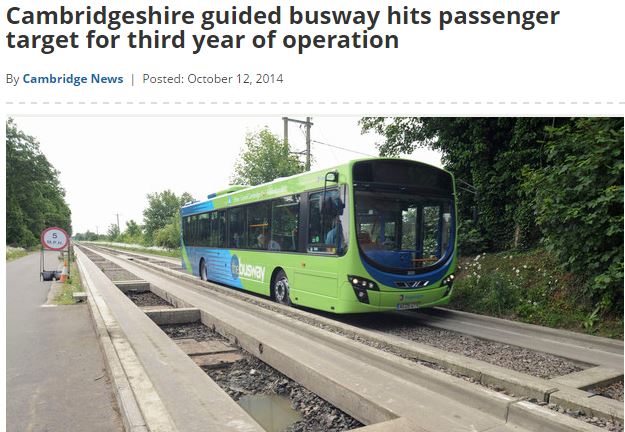
After initial criticism, rates of usage on similar busways in Cambridge and Luton have been high. When it comes to Greater Manchester’s scheme, Urbanitymcr believes that the proof will be in the pudding.
If the scheme is well used, and FirstBus’s Vantage ‘gets bums on seats’, the lane lost to the space-inefficient cars will be offset by the extra commuters piled on to the buses. The advantage of the busway, is that if it is successful, more buses could be added relatively easily.
‘The Largest Town Without A Rail Station’: Is a 50 minute journey time good enough?
Certain critics felt Leigh, stated as the ‘largest town without a rail station’ has been short changed by TfGM, preferring a rail link instead. The former mill town is 19km (12 m) from Manchester City Centre. TfGM have widely promoted the busway journey time between the town and the City Centre of 50 minutes.However, in that time, a passenger could have travelled between Stoke on Trent and Manchester Piccadilly (53km) and have time left over for a Soya Flat White.
Other towns closer to home which have direct rail links into Manchester have much faster connections into the City Centre. Trains between nearby Daisy Hill Station in Westhoughton bring weary commuters on Northern’s finest Pacer trains into the City Centre in around 39 minutes, while the Real Housewives of Cheshire set can travel between Alderley Edge and Piccadilly (a journey of 19km) in half an hour.
The Cost
The previous point on time, inevitably brings us to cost. £86m sounds like a large sum. However, providing an alternative rail or Metrolink route would have cost significantly more per mile. Planning a rail link would have required jumping through the various hoops that Network Rail, the Department for Transport and the Office of Rail and Road require.The planning process required would have taken years longer.
Network Rail have paused schemes up and down the country due to cost and time overruns. TfGM has proven with Metrolink and other schemes, that it acts best when Greater Manchester is allowed to provide a scheme on its own. It has done so quickly and on budget. The Busway is a high-capacity piece of infrastructure, delivered within a time and cost which the seemingly overinflated Network Rail would be unable to do.
When it comes to the actual operation of a Manchester-Leigh rail service, the issue of capacity in Central Manchester comes to the fore, as well as the viability of such a service. Where would these services be able to travel to, seeing as Manchester’s rail network is at capacity? Would passenger numbers warrant a frequent service or a service at all? A rail service would have unquestionably have required a subsidy, as well as new rolling stock, which adds another prohibitive cost. Day-to-day maintenance and operation of track and signalling would be over and above what a busway requires.
What About A Station At Kenyon Junction?
Some in Leigh argued for a station at Kenyon Junction, around 8km south of Leigh. Trains would have reached Manchester in around 20 minutes. However, this stop would not serve the town directly, nor would it be convenient for residents of Tyldesley or Atherton. Passengers would require a change to a bus to travel to Leigh. This journey plus time to disembark and change would have added around another 20 minutes to the journey. This would have allowed for quicker (albeit less frequent journeys), but services which require a transfer deter passengers.
Existing rail Stations at Daisy Hill, Newton-le-Willows, Atherton and Hag Fold are a similar distance from Leigh than Kenyon Junction and offer rail services already. The busway serves Leigh directly and connects it to other parts of Wigan and Salford in a way which a station at Keynon Junction could not..
And Metrolink?
Like Rail, Metrolink is expensive. If journey times on the lengthy Rochdale and Airport lines are anything to go by, such a service would only be marginally quicker than the guided bus, at significantly more cost.

The viability of a Metrolink service may also not be justified, as Metrolink’s success story has involved the inter-connectivity of transport hubs as well as large employment, education centres such as Bury Town Centre, MediaCity, the Etihad and the Airport. The alignment of the Leigh busway covers some unpopulated areas, while Urbanitymcr is sceptical that Leigh and Atherton would be able to act as ‘anchor’ termini on their own. However, Edinburgh is a case in point that conversion from busway to tram is feasible.
Axing of Local Bus Routes
First, the operator of the busway services recently announced the axing of services between Manchester and Boothstown, Swinton, Leigh and Atherton on the day that busway services will come into force. This will encourage bus users off conventional routes which may have served their origins/destinations more closely to walk to busway stops. Once busway services have time to settle in, it will be interesting to see whether other commercial operators such as Stagecoach attempt to replace some of these routes.
The Verdict
Motorists and businesses along the East Lancs corridor have had it rough during the busway works. The signs today of the purple Vantage services travelling along the East Lancs will be a welcome sight of the end of the roadworks. As transport schemes take around 3 years to reach sustainable levels of usage, only time will tell!
What do you think about the busway? Give us your two pennies worth below!

Urbanitymcr will be live tweeting from the first Vantage service leaving Manchester today. Follow @urbanitymcr on twitter at: http://twitter.com/urbanitymcr











